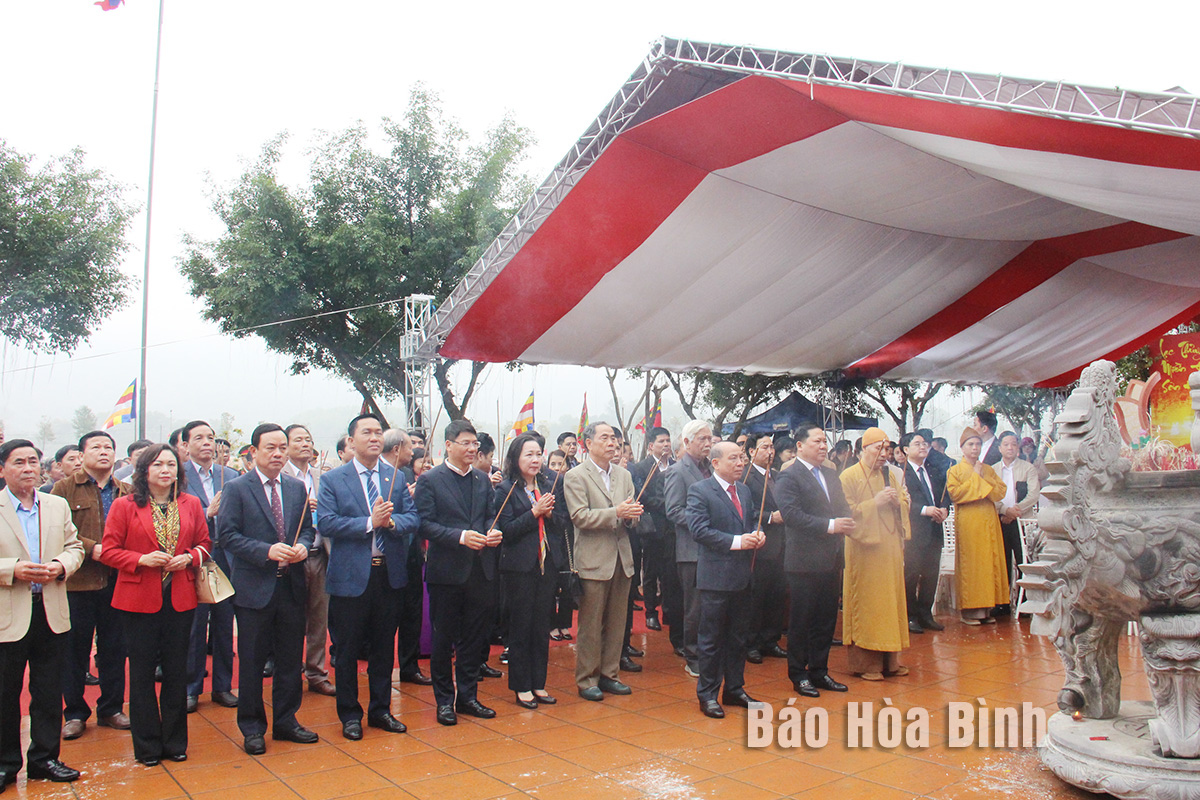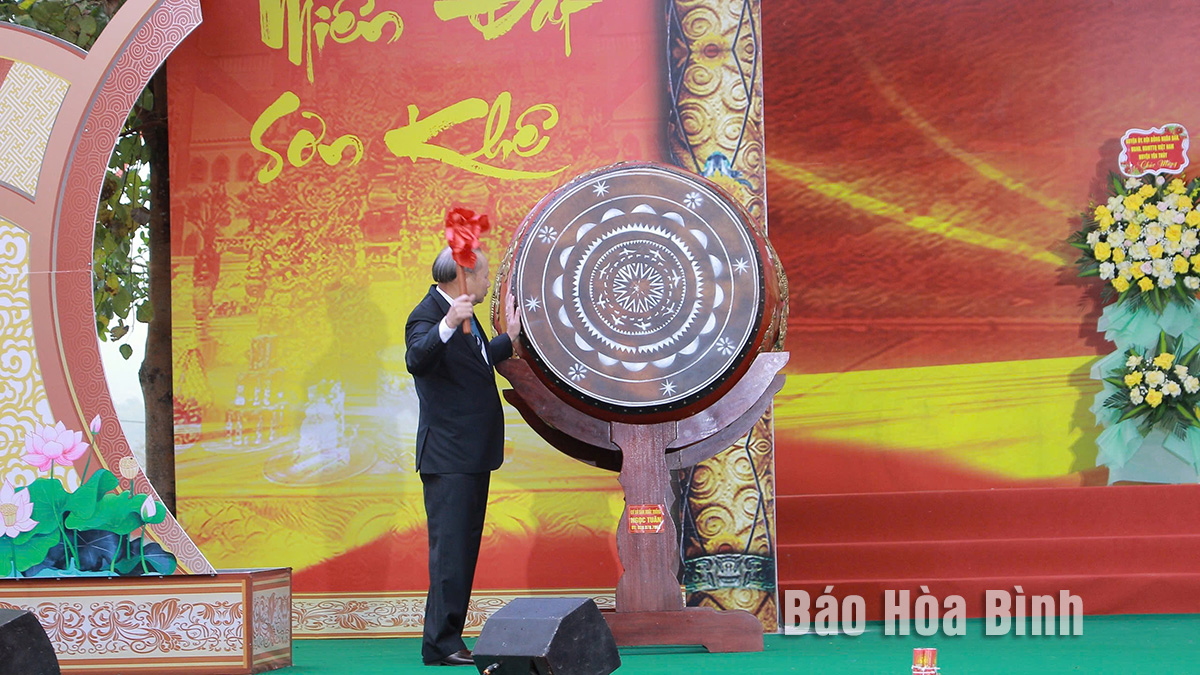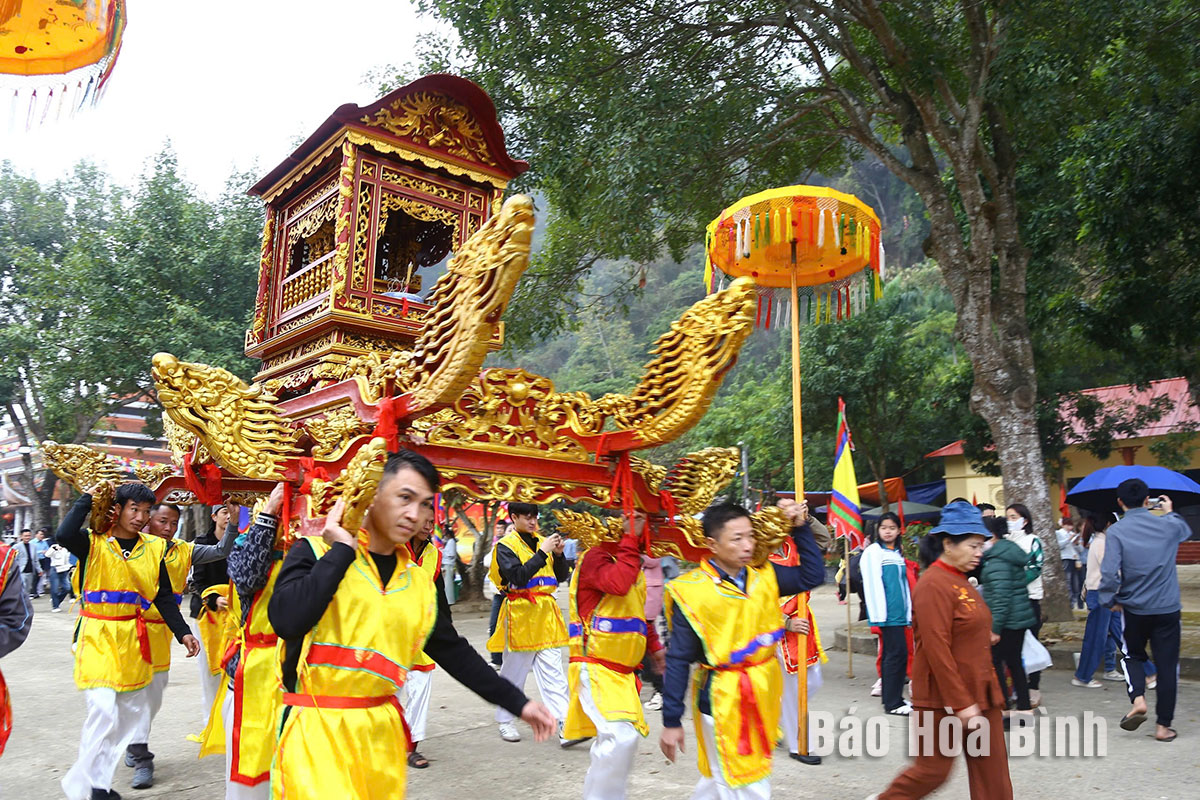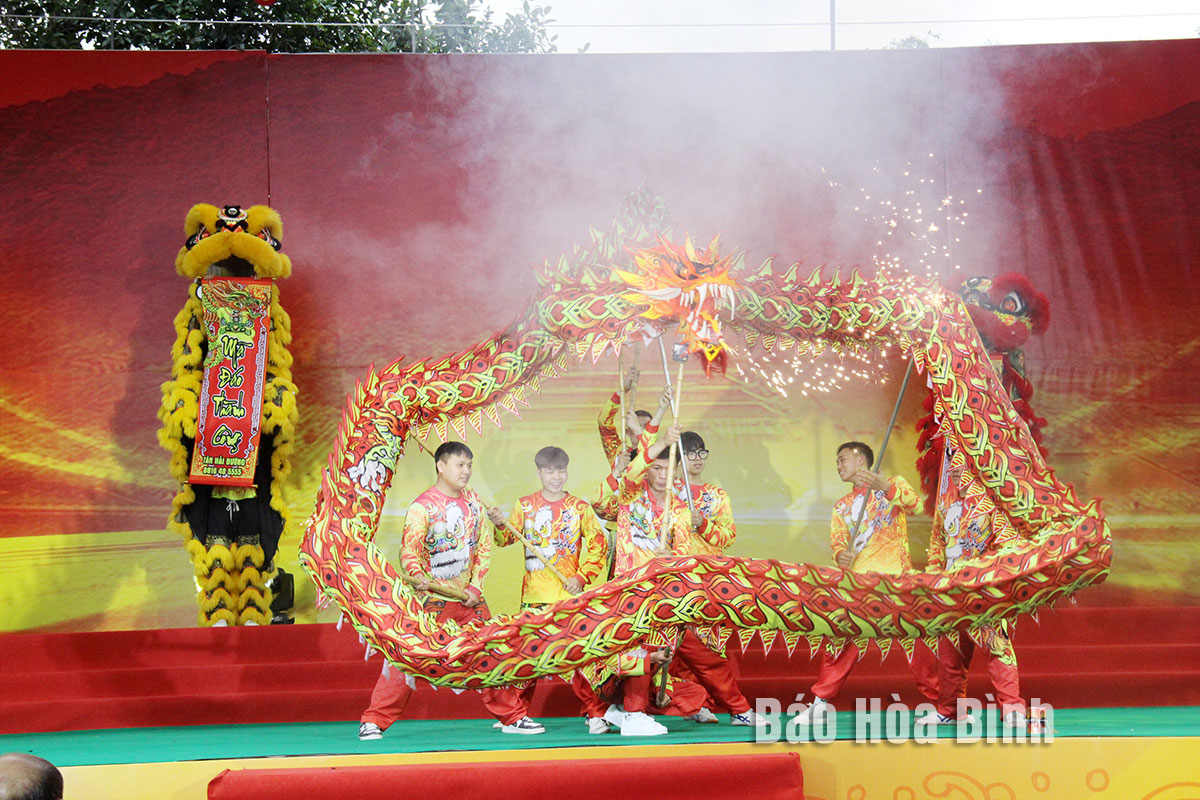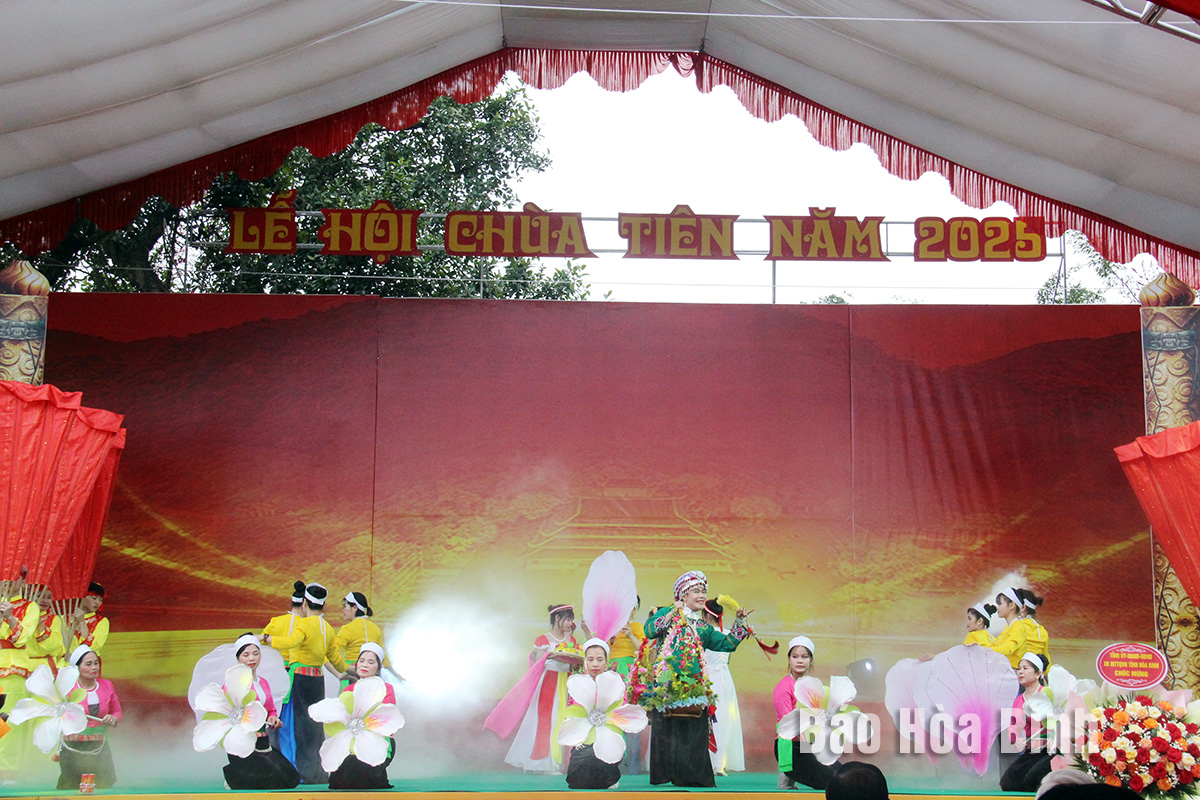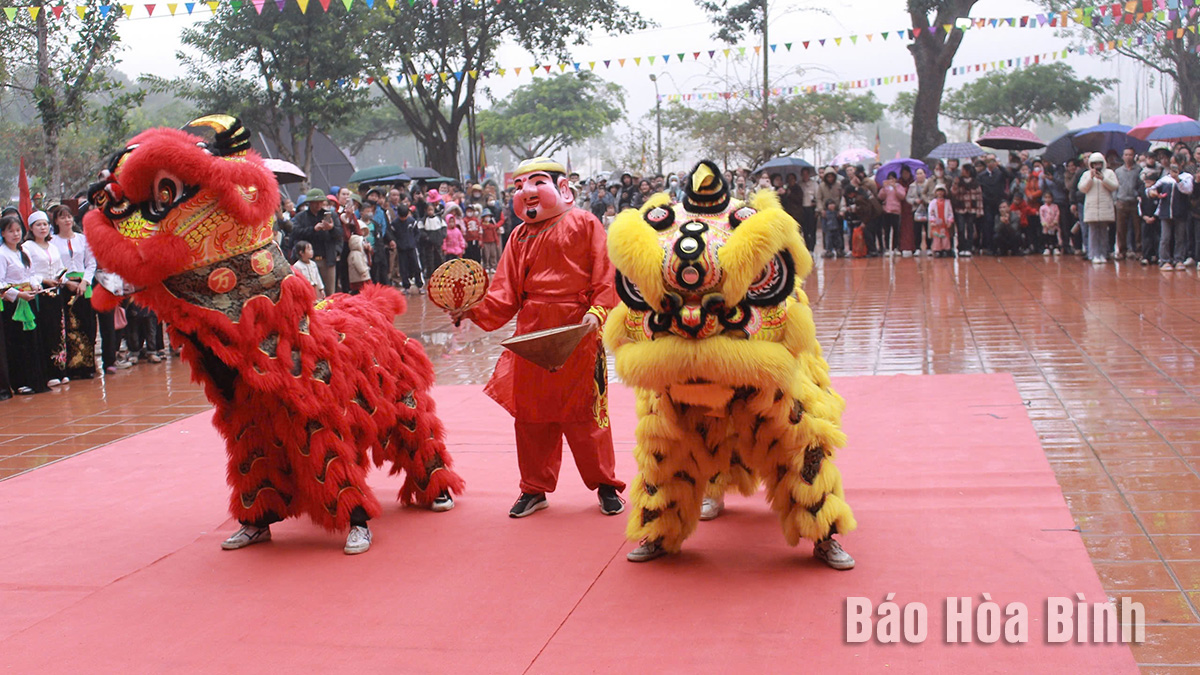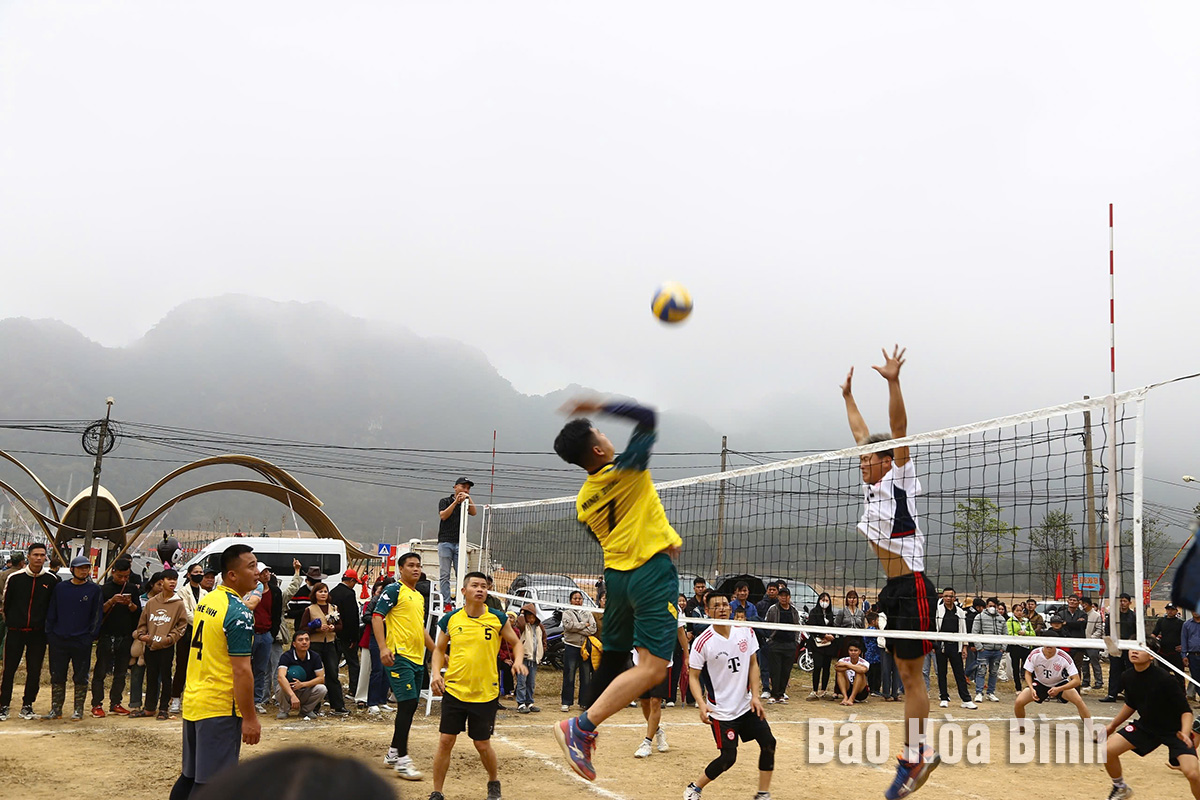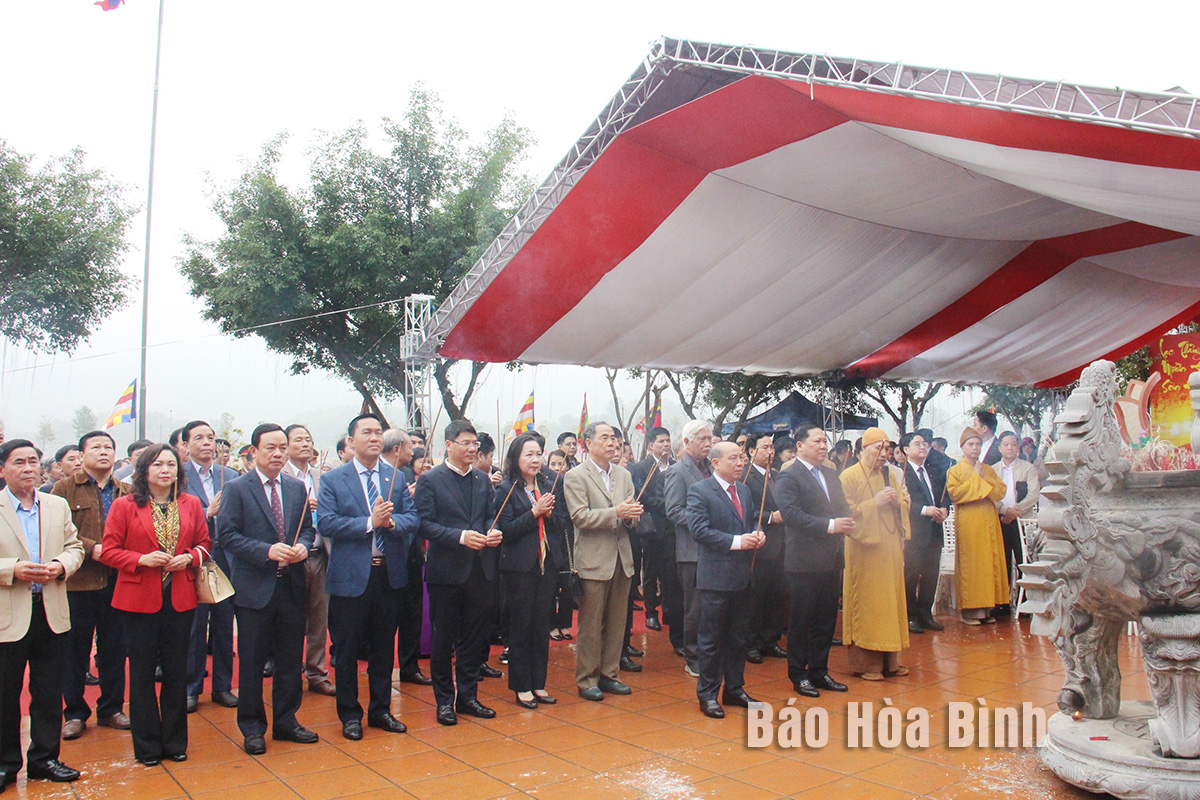
On the morning of February 1, 2025 (the fourth day of the Lunar New Year), the Lac Thuy district People’s Committee hosted the opening of the Tien pagoda festival. Attending the event were alternate member of the Party Central Committee and Secretary of the Hoa Binh provincial People’s Committee Nguyen Phi Long, permanent Vice Secretary of the provincial Party Committee and Chairman of the provincial People’s Commtitee Bui Duc Hinh.
Provincial, district leaders and
delegates offer incense at 2025 Tien pagoda festival in Lac Thuy district.
Vice Secretary of the district Party Committee and Chairman of the
district People’s Committee Nguyen Van Hai beats the drum to kick off 2025 Tien
pagoda festival.
A palanquin procession at the opening ceremony.
A lion and dragon dance performance at the opening ceremony.
At the heart of the festival lies the Tien Pagoda Cave Complex, a national
relic site recognised in 2011 with 21 distinct historical, cultural, scenic and
archaeological sites, each holding unique historical and cultural significance.
In 2025, the festival continues at the provincial level, spanning from January
31- February 2 with an array of cultural, sports, and folk activities, along
with traditional art performances such as lion and dragon dances, worship of
Mother Goddesses of ThreeRealms at Trinh and Mau temples and Tien pagoda,
and folk musical instrument playing, Muong gong, folk and Chau Van singing.
A music show at the opening of Tien pagoda festival in Lac Thuy district.
Visitors enjoy bamboo pole dancing and watching lion dance performances
at the festival.
Visitors take a ride on the cable car at Tien pagoda.
Sport activities draw a large number of locals and tourists to watch and
cheer.
The annual festival aims to instill a deep sense of patriotism, national pride,
and love for the homeland among all social classes, especially the youth. This
year, the newly operational Huong Binh cable car project offers a scenic
connection between Tien, Huong and Tam Chuc pagodas, significantly reducing
travel time for locals and tourists alike.
Through various festivities, residents and visitors can deeply appreciate the
strong influence of traditional cultural values in spiritual life, fostering a
positive mindset at the outset of the new year. The festival also encourages
people of all backgrounds to enthusiastically engage in labour, production and
studies to achieve 2025 socio-economic development goals, contributing to
realising the Resolution of the 17th provincial Party Congress and the 25th
district Party Congress.
With an increasingly vibrant and widespread emulation movement aimed at building cultured residential areas and cultured families, Yen Thuy District has been making steady progress toward improving both the material and spiritual well-being of its people, while fostering a civilized, prosperous, beautiful, and progressive community.
Once lacking recreational spaces and community facilities, Residential Group 2 in Quynh Lam Ward (Hoa Binh City) has recently received attention for the construction of a new, spacious, and fully equipped cultural house. The project followed the model of state support combined with public contributions in both labor and funding.
The "All people unite to build cultural life" movement, which has been effectively integrated with Kim Boi district’s socio-economic development goals, is fostering a lively spirit of emulation across local residential areas, hamlets, villages, public agencies, and enterprises. In addition, through the initiative, traditional cultural values are being preserved and promoted, while community solidarity and mutual support in poverty reduction and economic development are being strengthened.
A working delegation of the Hoa Binh provincial People’s Committee led by its Permanent Vice Chairman Nguyen Van Toan on June 11 inspected the progress of a project to build the Mo Muong Cultural Heritage Conservation Space linked to tourism services in Hop Phong commune, Cao Phong district.
Born and growing in the heroic land of Muong Dong, Dinh Thi Kieu Dung, a resident in Bo town of Kim Boi district, in her childhood was nurtured by the sweet lullabies of her grandmother and mother. These melodies deeply imprinted on her soul, becoming an inseparable part of her love for her ethnic group's culture. For over 20 years, this love for her hometown has driven Dung to research, collect, and pass down the cultural values of the Muong people to future generations.
In the final days of May, the Ethnic Art Troupe of Hoa Binh Province organized performances to serve the people in remote, mountainous, and particularly disadvantaged areas within the province. These were not just ordinary artistic shows, but they were the meaningful journeys aimed at spreading cultural values, enhancing the spiritual life of the people and contributing to the preservation of ethnic minority cultural identities.



